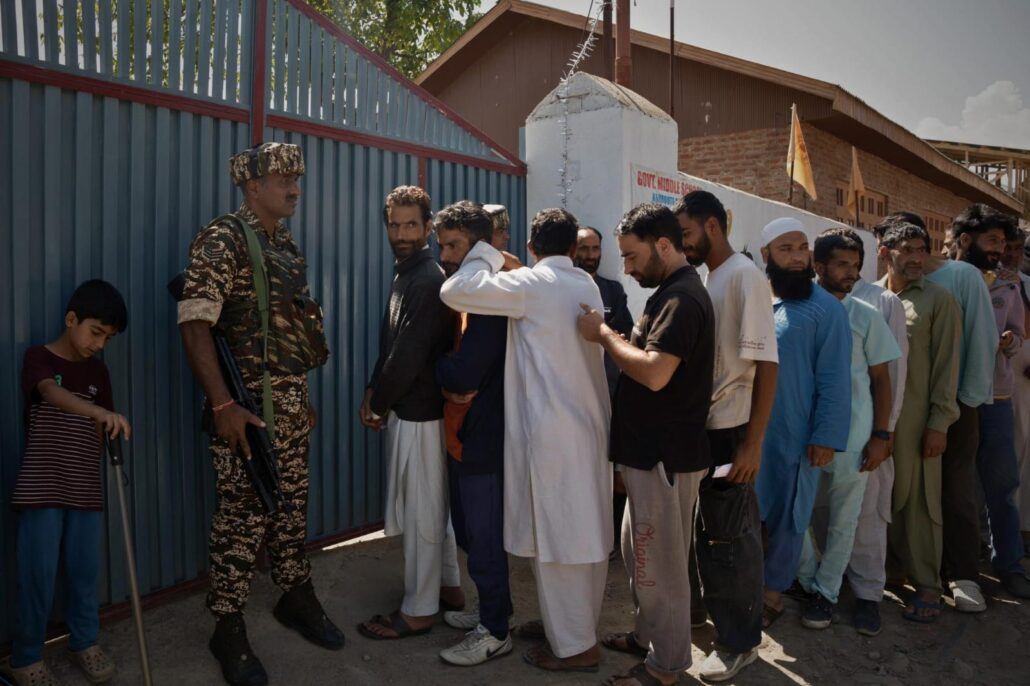
Voter turnout across the sixteen (16) assembly segments of Kashmir’s assembly constituencies in the elections, held after a decade, showed mixed response, with some areas witnessing a significant rise in voter engagement while others recorded a decline compared to the 2014 elections.
The overall voting percentage across 24 assembly segments that went to polls on Wednesday during the first phase stood at 58.85, while in Kashmir valley the voting stood at 53.85 per cent.
ALSO READ: Devsar’s Political Puzzle: Dark Horse, PDP’s legacy, NC’s challenge, or the Former MLA’s comeback?
These elections, held after ten years, were particularly important as voters participated in an environment marked by political shifts and regional tensions.
According to data available to The Kashmiriyat, in Pulwama district, several assembly constituencies (ACs) showed an increase in participation. Pulwama AC, which is likely to witness a toughly fought battle between Waheed Para of PDP and NC’s Mohammed Khalil Bandh, recorded a notable rise from 38.31% in 2014 to 49.5% in 2024, marking an increase of 11.19%. Rajpora AC also saw a slight increase from 47.06% to 48.1%. In contrast, Pampore AC, where former parliamentarian Hassnain Masoodi, experienced a marginal decline from 47% in 2014 to 44.4%. Tral AC saw a significant rise from 37.68% to 43.8%, indicating a 6.12% increase.
ALSO READ: Non-ST voters hold key in Kokernag election as ST candidates dominate race
In Shopian district, Zainapora AC (formerly Wachi) witnessed a substantial rise in voter turnout, from 42.66% in 2014 to 56.2% in 2024, marking an increase of 13.54%. Shopian AC also saw an increase, with turnout rising from 52.06% to 57.9%, showing a 5.84% increase.
ALSO READ: The battle for Chenab Valley: Is divided vote easing BJP’s path?
In Kulgam district, Kulgam AC, where Mohammed Yusuf Tarigami is likely to sail across easily to the the MLA for the fifth time, recorded an increase from 58.44% in 2014 to 63.3% in 2024. However, Devsar AC, which is seeing a four-way contest, saw a slight decline from 60.03% to 57.4%. Damhal Hanjipora AC (formerly Noorabad), the fortress of NC leader Sakeena Itoo, experienced a significant drop in voter turnout, decreasing from 77.60% in 2014 to 69.3% in 2024, showing a decline of 8.3%.
ALSO READ: PDP vs. NC in Bijbehara: Will Iltija Mufti retain PDP’s bastion against Bashir Veeri?
Anantnag district also presented mixed results. Anantnag AC, which is likely to see the main contest between PDP’s Mehboob Beig and Hilal Shah of Apni Party, saw a rise in voter turnout, increasing from 38.67% in 2014 to 45.2% in 2024, a 6.53% increase. Anantnag West AC (formerly Home Shalibugh), witnessing a tough battle between Abdul Majid Larmi and PDP’s Abdul Gafar Sofi, showed an increase from 36.5% to 42.4%, marking a 5.9% rise. However, Shangus AC (Anantnag East), which has seen a cut of several areas including Achabal town, recorded a significant decrease, with turnout dropping from 67.27% in 2014 to 55.6% in 2024, showing an 11.67% decline. Srigufwara-Bijbehara AC, an important seat where Iltija Mufti and Bashir Veeri are in fray, saw an increase from 53.87% to 60.0%, indicating a 6.13% rise.
Dooru AC, the home of Congress senior leader Ghulam Ahmed Mir, saw a slight decline in voter turnout, dropping from 63.94% in 2014 to 60.7% in 2024. In Pahalgam, Mohammed Altaf Kaloo is likely to retain his seat. The Assembly constituency on the other hand, saw a modest increase, from 68.53% in 2014 to 71.4% in 2024, showing a 2.87% rise. Kokernag AC, now declared an ST-reserve seat, recorded a slight decline, with turnout decreasing from 64.9% in 2014 to 62.2% in 2024.
The trends from these assembly constituencies will have a lasting impact on the region’s political landscape, particularly as South Kashmir navigates governance and development challenges after years of political uncertainty.
